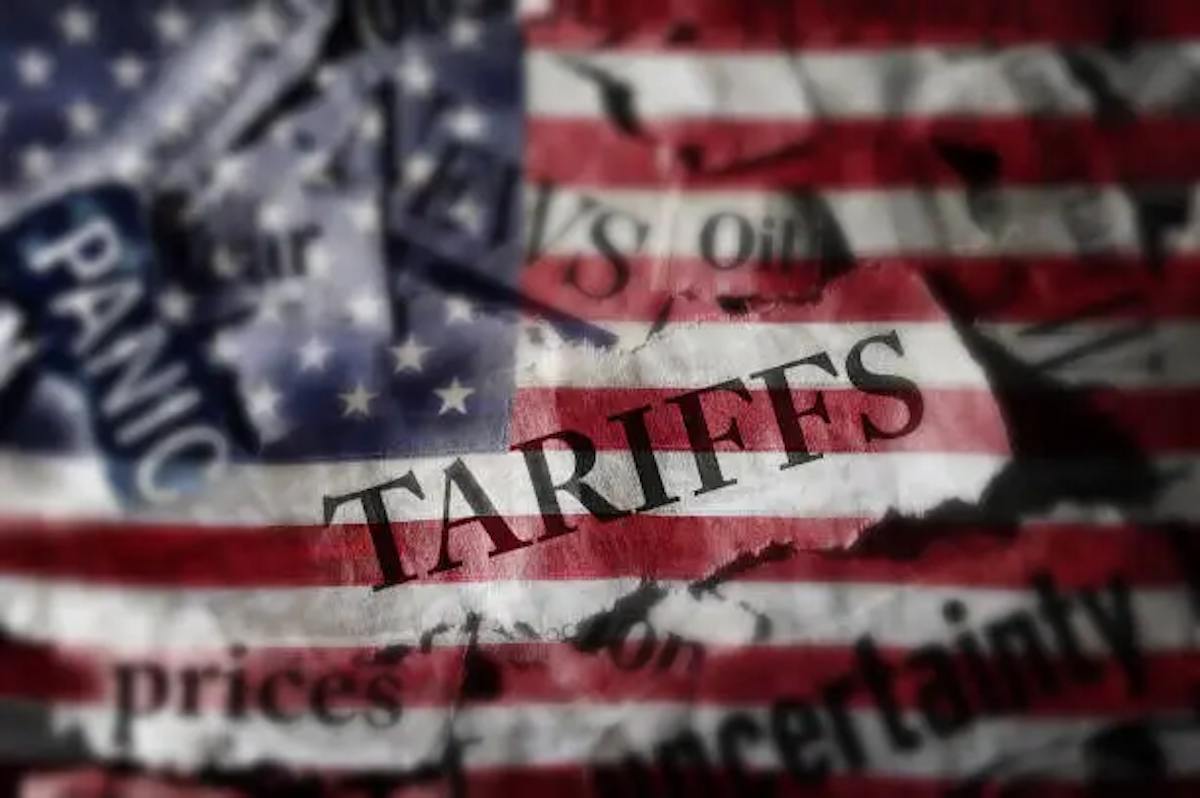5 Restaurant Consumer Spending Trends to Know in 2025
Consumer spending is a big factor in how the restaurant industry operates, especially as we move through 2025. Inflation has shifted how people spend...
Platform
Combining online ordering, loyalty, omnichannel messaging, AI insights, and payments in one platform. Paytronix delivers relevant, personal experiences, at scale, that help improve your entire digital marketing funnel by creating amazing frictionless experiences.
A Complete Customer Experience Platform
Online Ordering
Acquire new customers and capture valuable data with industry leading customization features.
Loyalty
Encourage more visits and higher spend with personalized promotions based on individual activity and preferences.
Catering
Grow your revenue, streamline operations, and expand your audience with a suite of catering tools.
CRM
Build great customer relationships with relevant personal omnichannel campaigns delivered at scale.
Artificial Intelligence
Leverage the most data from the most customer transactions to power 1:1 marketing campaigns and drive revenue.
Payments
Drive brand engagement by providing fast, frictionless guest payments.
Solutions
We use data, customer experience expertise, and technology to solve everyday restaurant and convenience store challenges.
Contactless Experiences
Accommodate your guests' changing preferences by providing safe, efficient service whether dining-in or taking out.
Customer Insights
Collect guest data and analyze behaviors to develop powerful targeted campaigns that produce amazing results.
Marketing Automation
Create and test campaigns across channels and segments to drive loyalty, incremental visits, and additional revenue.
Mobile Experiences
Provide convenient access to your brand, menus and loyalty program to drive retention with a branded or custom app.
Subscriptions
Create a frictionless, fun way to reward your most loyal customers for frequent visits and purchases while normalizing revenues.
Employee Dining
Attract and retain your employees with dollar value or percentage-based incentives and tiered benefits.
Order Experience Builder
Create powerful interactive, and appealing online menus that attract and acquire new customers simply and easily.
Loyalty Programs
High-impact customizable programs that increase spend, visit, and engagement with your brand.
Online Ordering
Maximize first-party digital sales with an exceptional guest experience.
Integrations
Launch your programs with more than 450 existing integrations.
Loyalty Programs
Deliver the same care you do in person with all your digital engagements.
Online Ordering
Drive more first-party orders and make it easy for your crew.
Loyalty Programs
Digital transformations start here - get to know your guests.
Online Ordering
Add a whole new sales channel to grow your business - digital ordering is in your future.
Integrations
We work with your environment - check it out.
Company
We are here to help clients build their businesses by delivering amazing experiences for their guests.
Meet The Team
Our exceptional customer engagement innovations are delivered by a team of extraordinary people.
News/Press
A collection of press and media about our innovations, customers, and people.
Events
A schedule of upcoming tradeshows, conferences, and events that we will participate in.
Careers
Support
Paytronix Login
Order & Delivery Login
Resources
Learn how to create great customer experiences with our free eBooks, webinars, articles, case studies, and customer interviews.
FlightPaths are structured Paytronix software onboarding journeys designed to simplify implementation and deliver maximum ROI.
See Our Product In Action
E-Books
Learn more about topics important to the restaurant and c-store customer experience.
Reports
See how your brand stacks up against industry benchmarks, analysis, and research.
Blog
Catch up with our team of in-house experts for quick articles to help your business.
Case Studies
Learn how brands have used the Paytronix platform to increase revenue and engage with guests.
Is your brand tapping into these three unshakeable pillars of guest loyalty in 2025?
7 min read
Apr 14, 2025

Tariffs affect nearly every aspect of the food industry, from the cost of ingredients to the logistics of getting products on shelves or plates. For restaurants and convenience stores (c-stores), these taxes on imported goods ripple through supply chains, driving up prices and squeezing profitability.
As 2025 unfolds, understanding how tariffs affect operations is critical for businesses aiming to make smart decisions and protect their bottom line. This guide dives into the economic effects of tariffs, their role in inflation, and practical strategies to keep costs in check.
Tariffs are taxes imposed by governments on imported goods, designed to protect domestic industries or address trade imbalances. They raise the cost of bringing products into a country, which reshapes global trade dynamics.
For restaurants and c-stores, this matters because so much of your inventory—think produce, meats, or packaged snacks—comes from abroad, especially Mexico, China, and European nations. When tariffs increase, the price of these goods climbs, and owners like yourself feel the pinch.
A proposed 200% tariff on European wine, announced in March 2025, could drastically affect the price of imported French, Italian, or Spanish wines—staples in many restaurant menus and c-store shelves. If approved, these price increases could force you to either absorb the higher costs or pass them on to customers.
When tariffs come into effect, they push up costs at every step of the supply chain. Importers pay more, suppliers raise their rates, and businesses face higher bills for everything from olive oil to canned goods. This isn’t limited to food—energy prices climb too, as tariffs on foreign oil or equipment parts ripple through transportation and production. Inflation follows, making it tougher for your business to maintain the same prices.
Looking back, the 2018-2019 tariff hikes on Chinese goods offer a clear lesson. According to the National Bureau of Economic Research, U.S. prices for goods hit by these tariffs rose by about 16% on average by late 2019. These increased prices affected millions of businesses across the U.S., pushing owners to wrestle with whether to trim margins or tweak menu and shelf prices to cope.
When import costs rise, menu prices and c-store markups often follow. A $10 burger might creep up to $11, and that $2 energy drink could hit $2.50. This dents your guests’ discretionary spending. People start skipping extras like appetizers or impulse buys at the checkout, opting for cheaper alternatives instead.
Businesses can’t ignore this shift. To maintain customer loyalty, you must actively counter the impact—tweaking portion sizes or rolling out smart promotions—before loyal guests are driven away by rising prices.
As tariffs continue to evolve in 2025, their impact on the restaurant and convenience store industries becomes increasingly evident. Here are a few ways in which tariffs are affecting restaurants and c-stores in 2025.
Tariffs introduced on April 2, 2025, are driving up the cost of imported staples. Canadian beef now carries a 25% duty, while European cheeses are hit with tariffs of 20–25%. These rising costs are putting added pressure on restaurant and c-store margins.
In response, businesses are adapting quickly. Many are switching to domestic suppliers—trading Canadian beef for U.S. cuts to avoid tariffs altogether. Others are negotiating bulk deals with importers to secure pre-tariff pricing while inventory lasts.
Tariffs don't just raise food costs—they ripple across operations. As ingredient prices climb, so do wage expectations, especially in competitive labor markets. Restaurant and c-store employees facing higher living costs may push for raises, putting pressure on already tight payroll budgets.
To stay resilient, reassess your staffing strategies and keep your team lean. Reduce non-peak shifts or cross-train team members to do more with fewer hands. You can also utilize automation—such as self-checkout kiosks, kitchen display systems, or AI-driven scheduling tools—to cut down on labor hours without compromising service.
With tariffs driving up the cost of key ingredients and supplies, you’ll need to rethink your pricing strategy. It’s crucial to strike a balance here. Setting higher prices across the board can turn consumers away, but ignoring rising costs can eat into already-thin margins.
Get creative when maintaining value. Bundling items, like a drink, snack, and sandwich combo, can offer perceived value while subtly increasing the average ticket. Using a loyalty marketing strategy can also incentivize repeat business without relying on broad price increases.
Restaurants are already adapting their pricing and sourcing strategies to manage tariff-driven costs. Waffle House, for example, added a 50-cent surcharge per egg to offset higher prices. Chipotle has diversified its supply chain to countries like Colombia and Peru to reduce dependency on tariff-affected regions.
As tariffs continue to drive up costs in the restaurant and c-store industry, businesses must adopt strategies to stay competitive and protect their margins. Here are three effective approaches to help mitigate the impact of tariffs on your operations.
Work closely with your suppliers to secure long-term contracts or bulk deals that lock in pre-tariff rates. This can provide stability for both parties while helping to mitigate the cost increase.
On top of that, increase reliance on domestic and local suppliers. Sourcing products closer to home not only reduces exposure to tariffs but also supports local businesses, potentially boosting your brand's image. Local suppliers often have shorter lead times and more flexibility in adjusting to demand fluctuations, which streamlines operations.
Diversifying your supply chain is also crucial in managing tariff-related risks. By sourcing from multiple countries or regions, you reduce the risk of being overly dependent on one source. This approach offers flexibility in case tariffs are imposed on certain imports, allowing you to quickly switch suppliers without significant disruptions to your business.
As tariffs drive up costs, leveraging customer loyalty programs can be a smart way to maintain spending without losing customers. By offering rewards—such as points for purchases or exclusive discounts—you can offset price hikes and provide added value to your customers. These programs encourage repeat business and reduce the pinch of higher prices.
Many restaurants and c-stores are already utilizing loyalty programs to incentivize repeat business. For instance, Starbucks offers its rewards members personalized promotions based on their purchase history, while grocery chains like CVS use their loyalty programs to offer discounts on frequently purchased items.
Personalized discounts and promotions also play a key role in keeping customers satisfied amidst price increases. Offering tailored discounts based on individual preferences or purchase history creates a sense of exclusivity and helps customers feel like they are getting a deal, even if menu prices are higher. This allows you to combat the impact of tariffs while keeping your customers loyal.
To counter rising costs from tariffs, AI-driven inventory management offers a powerful solution. Predictive algorithms can analyze demand patterns, allowing you to order the right amount of stock at the right time. This reduces the risk of overstocking or shortages—both of which increase operational costs and erode margins.
Minimizing food waste is another critical strategy. Best practices include portion control, using ingredients creatively, and optimizing shelf life. For example, you can repurpose surplus ingredients into new menu items or implement a first-in, first-out system to ensure older stock is used before it spoils.
Real-time sales data is also essential for inventory efficiency. By monitoring sales trends, you can adjust orders and pricing quickly. If certain items are underperforming due to tariff-related price increases, you can pivot to more cost-effective alternatives. Staying agile and data-driven helps protect profitability in a volatile pricing environment.
As global trade dynamics shift, it’s crucial for businesses to anticipate how tariffs may continue to evolve in the coming years. Understanding these potential changes helps you plan and adjust your strategy to stay ahead of any new challenges.
As tariffs continue to shape the economic landscape, government policy changes are poised to directly impact U.S. consumer inflation. Higher tariffs on imports, especially food and raw materials, will almost certainly result in increased costs for consumers. These price increases are likely to lead to higher inflation, especially in industries heavily reliant on imported goods.
Following the tariffs introduced in April 2025, other sectors may face price hikes in the near future. Pharmaceuticals, currently exempt, could soon be subjected to tariffs, along with semiconductors. For c-stores, this could mean higher costs for over-the-counter medications, health products, and essential technologies like POS systems.
Looking ahead, the long-term economic forecast suggests that food and beverage pricing will remain volatile. Adaptability and strategic planning will be key to navigating this shifting environment.
To prepare for potential tariff changes, restaurants and c-stores should prioritize proactive financial planning and cost forecasting. This allows you to anticipate how tariff increases might impact their margins and make adjustments before changes take effect.
Closely monitor ongoing tariff negotiations and trade policies to stay informed about upcoming shifts and adjust your strategies accordingly. Adopt flexible pricing strategies, such as dynamic pricing or bundling, to remain competitive despite rising costs. You can also engage your customers through loyalty programs and targeted promotions to encourage customer retention and boost sales.
As tariffs on imported goods continue to shape global trade, businesses, especially in the restaurant and c-store industries, are grappling with how these policies affect pricing, supply chains, and profitability. Below, we answer some common questions about tariffs and their wider impact on the economy.
Yes, tariffs contribute to inflation by increasing the cost of imported goods, which in turn raises the prices of products for consumers. When businesses face higher costs for raw materials or ingredients due to tariffs, they often pass those costs onto customers through higher prices.
This leads to inflationary pressure, especially in industries that rely heavily on imports, such as food and retail sectors. Consumers feel the impact through higher prices on everyday items, from groceries to restaurant meals.
Tariffs have both positive and negative effects. On the positive side, they protect domestic industries from foreign competition by making imported goods more expensive, potentially boosting local production. Tariffs also serve as a tool for political leverage in trade negotiations.
However, the cons include higher prices for consumers, disrupted supply chains, and strained international relations. Businesses that rely on imported materials face increased operational costs, which either erode profit margins or result in price hikes that alienate customers.
Countries with high tariffs include India, Brazil, China, and others that are involved in trade protectionism or seek to support their domestic industries. The United States also has high tariffs on imports, particularly under the Trump administration's trade policies. High tariffs create challenges for businesses that depend on sourcing goods from abroad, as they increase the cost of production and reduce the competitiveness of imported products.
The United States' main export is machinery and equipment, which includes items like computers, electrical machinery, and industrial machines. Additionally, the U.S. is a major exporter of aircraft, vehicles, and mineral fuels.
Agricultural products like soybeans, corn, and meat also play a significant role in U.S. exports, particularly to countries in Asia. These exports are crucial to the U.S. economy, supporting jobs in manufacturing, agriculture, and other key sectors.
As tariffs continue to shape the economic landscape in 2025 and beyond, restaurants and c-stores must remain agile. Adapting to fluctuating trade policies means rethinking everything from your supply chain to your pricing and customer engagement strategies. By tracking inflation trends, negotiating smarter supplier contracts, and leveraging loyalty programs, you can weather rising costs and protect your bottom line.
Request a demo today to discover how Paytronix can be an integral part of your strategy to stay competitive, boost customer loyalty, and navigate the evolving impact of tariffs with confidence.

Consumer spending is a big factor in how the restaurant industry operates, especially as we move through 2025. Inflation has shifted how people spend...

Labor costs represent one of the most significant operational expenses in the restaurant industry and controlling them has become increasingly...

Table turnover is one of the most critical metrics in the restaurant business. It affects everything from how much revenue you make per shift to how...